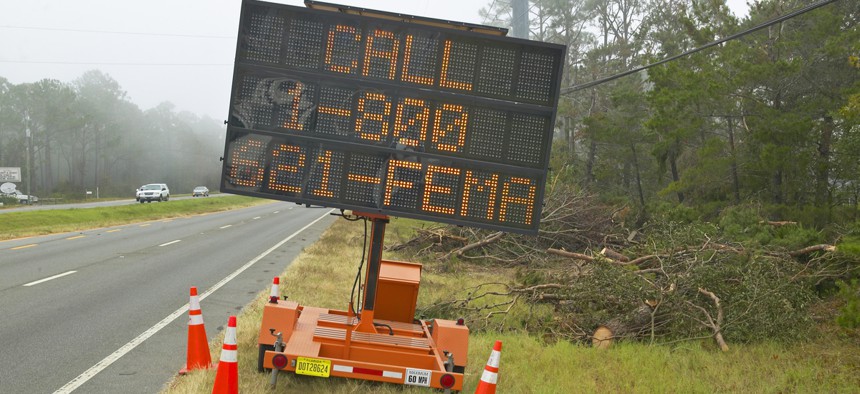Hurricane Season Likely to Be Less Active, Forecasters Say

An average hurricane season produces 12 named storms, according to NOAA. Shutterstock

Connecting state and local government leaders
The National Oceanic and Atmospheric Administration revised its hurricane season outlook Thursday.
Federal forecasters revised their hurricane season outlook Thursday, calling for below-normal storm activity in the Atlantic Ocean thanks partially to the predicted development of El Niño.
The National Oceanic and Atmospheric Administration’s new seasonal outlook indicated a 60 percent chance of below-normal storm activity, up from 25 percent in May, said Gerry Bell, lead seasonal hurricane forecaster at the agency’s Climate Prediction Center.
Forecasters had originally predicted “near-normal or above-normal” activity during hurricane season, which stretches from June to November.
“Fortunately, the chance of an above-normal season has dropped to only 10 percent,” Bell said on a call about the updated outlook.
The revised outlook calls for between nine and 13 named storms, four to seven of which could strengthen to hurricanes. Up to two of those could become major hurricanes, defined as storms rated category 3 or higher, Bell said.
Those ranges include four named storms that have already formed in the Atlantic Ocean this year.
In May, NOAA had predicted 10 to 16 named storms, with five to nine hurricanes, one to four of them category 3 or higher.
An average six-month hurricane season produces 12 named storms, six of which strengthen to hurricanes, according to NOAA.
The lowered prediction is partially due to the increased likelihood—70 percent, up from 45 percent in May—that El Niño will form. The weather pattern, which warms the ocean surface, will likely be severe enough to deter hurricane activity, Bell said.
“We’re expecting El Niño to develop in the next few months, and the models are predicting that it will become strong enough to suppress the hurricane activity,” he said. “Exactly when it develops will be a factor in determining exactly what we get for the season as a whole.”
Also at play: cool sea-surface temperatures in the main storm development region, “coupled with stronger wind shear, drier air and increased atmospheric stability,” he said.
Despite the downgraded forecast, NOAA and the Federal Emergency Management Agency urged residents in coastal areas to stay prepared and vigilant for storms.
“Today’s updated outlook is a reminder that we are entering the height of hurricane season and everyone needs to know their true vulnerabilities to storms and storm surge,” FEMA Administrator Brock Long said in a statement. “Now is the time to know who issues evacuation orders in their community, heed the warnings, update your insurance and have a preparedness plan. Don’t let down your guard, late season storms are always a possibility, always keep your plans updated.”
Kate Elizabeth Queram is a Staff Correspondent for Government Executive’s Route Fifty and is based in Washington, D.C.

NEXT STORY: Breaking Down Opioid Deaths by Occupation




